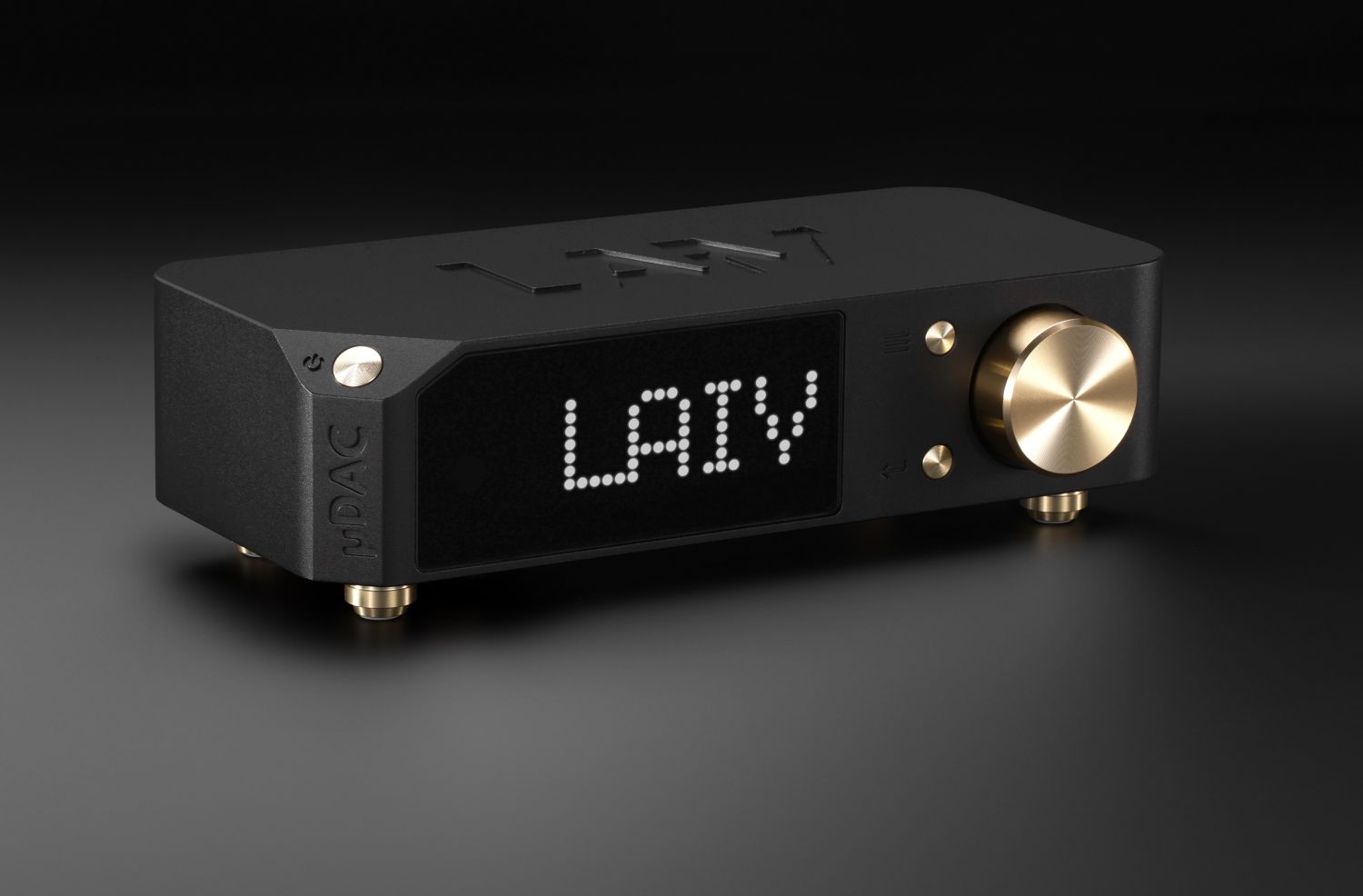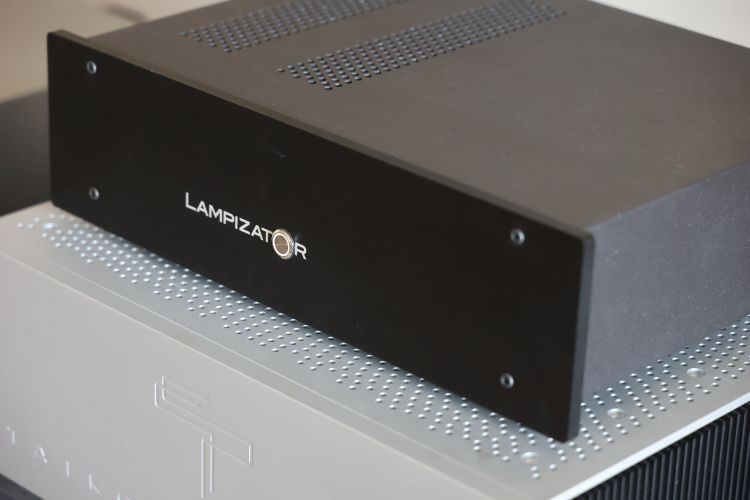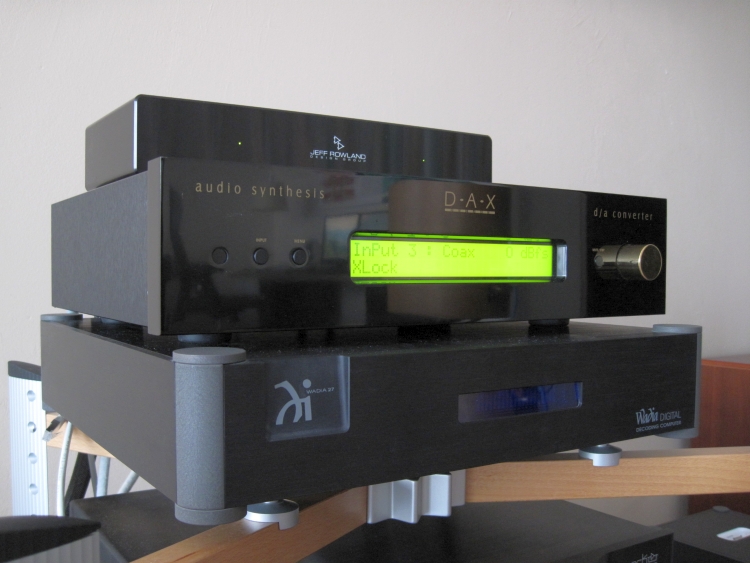
An older dac but recently overhauled at the factory to bring it to current spec
The DAX was supplied to me by a reader of this site, an enthusiastic Frenchman who decided to ship his component to me before going on his honeymoon. The DAX Decade may be an oldie, but it is a goodie! Smooth, fluid, refined and utterly silky and airy in the treble. Read on for a comparison to some world-class dacs.
The dac was of course well-warmed up before listening began, and actually became pretty warm to the touch, almost to the extend of the Wadia 27ix dac which consumes a steady 60 watts.
DAX Decade Introduction
This model is an upgrade from a DAX-2 and not an original Decade like it was sold in shops. Audio Synthesis says it’s a Decade so it’s most likely exactly the same and the internal construction is really close. I have never before heard any Audio Synthesis products so this model is all I can go by. But at the time of this review I did have several other highend dacs available for comparison.
Even without any comparison, and as soon as the DAX started playing, what struck me about its sound was that it is creamy-smooth and has velvety highs and very good air and ambiance.
Even without comparing to the other dacs this was clearly evident. What’s also quite evident is that all this luxury doesn’t come for free. The DAX loses some points on focus and stability. Nevertheless, it was never anything less than a highly musical performer.
It was during further comparisons that the nature of the DAX became more apparent. Therefore, I will describe the DAX by comparing it to each other DAC one by one. I used two sources: the highly musical Marantz CD80 with Wireworld Gold Starlight III+ digital coaxial cable and my main computer setup. In short this consists of a standard Win XP computer running Winamp 5 with a HiFace EVO usb interface and Belden RG59 or ST glass connection to the DAC. Interlinks are Transparent Ultra XL’s to start off with and Cardas Quadlink 5C was used for further comparison. All analog cables are balanced XLR versions. Power cables also started off being the same for all dacs but I quickly discovered that every dac had its own preferred cable. The DAX worked well with almost all available powercables but it worked best with a musical yet powerful sounding cable with an open midrange. I decided on a homemade Lapp with IeGO connectors.
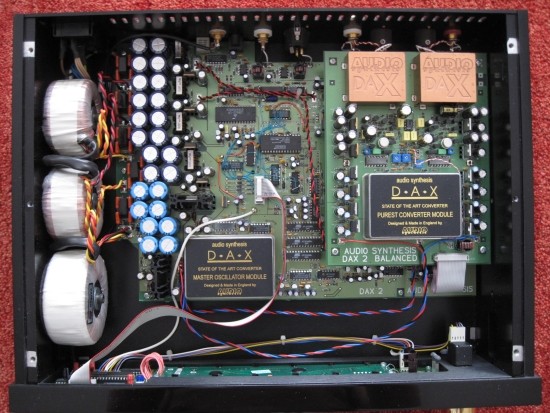
Comparisons with CD player source
CD80 with the DAX
This is one smooth combo. The CD80 already sounds highly liquid due to its CDM1 swing arm mechanism and the combination with the DAX makes for a super-relaxing sound. The impression is of a lush, smooth and luxurious sound that really caresses the ear. There’s just no sharpness or aggression at all. The midrange is slightly withdrawn while the treble is extremely airy and super-refined, and never glassy or hard. The DAX reminds me of a combination of Audiomeca’s Enkianthus X and Levinson’s 360s. There’s a huge apparent transparency but also a highly musical relaxation. Rhythmically this combo isn’t slow but not very articulate either. Snaredrums and piano are softened, focus is a bit blurry and although this is a highly romantic and seductive sound, even for me it can be too much of a good thing with certain cd’s and this much relaxation sometimes results in less involvement.
CD80 with the Levinson no.360S
Although the DAX shares similarities with the Levinson no.360s, there are also quite marked differences. Piano is much more clear and dynamic, this combo having a more acoustic, live signature. Bass is much tighter and more articulate but still full and rich and fluid. The sound is more lively and has better PRAT without ever tipping over into sterility or dryness. The Levinson’s treble is a little bit more technical than the DAX’s but still on the musical side of things. (mind you: the Levinson is much smoother and refined in the treble than the PS Audio PWD, so this means that the DAX really is super-smooth.) The overall character is not so much different from the DAX but involves you into the sound more effectively. Also, staging and focus are much better with the Levinson, again without sacrificing anything in the fluidity department. The combo of CD80 with the 360s reminds me of the Levinson 390S cd player which isn’t that strange because that one also uses a Philips cd mechanism, albeit a more modern CDM-pro.
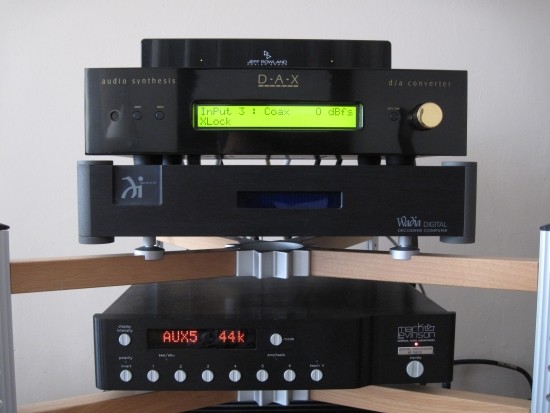
CD80 with the Wadia 27ix GNSC
I normally use the same interlinks and powercables for all components when starting comparisons and then gradually optimize them for the component’s character. The Wadia 27ix GNSC could use some livelier cables than the Transparent Ultra XL to compensate for its darker and more laidback balance. Do note that this is the GNSC modified version, which sounds a lot smoother than the standard issue. The CD80-W27 combo produces a very nicely balanced sound with an open and communicative midrange and a very good soundstage that is wide and deep and offers superb center image focus that even rivals that of the Levinson. The treble is slightly darker than with the DAX or Levinson but that is a well known Wadia tradeoff, which is apparently necessary in order to produce such nice soundstaging and liveliness. The Wadia has very good bass but has to cave in to the Levinson which manages to sound just as full-bodied while being more articulate and more nimble and by doing so makes for better foot-tapping.
CD80 with the PS Audio PWD
Very lively and dynamic presentation that is immediately appealing and commands attention. The PWD has sublime bass that is highly articulate, fast and agile yet full-bodied and very solid. The overall impression is of a very lively and upbeat sound but it lacks some refinement and polish compared to the other dacs here, especially the DAX, which is much, much, much more fluid and subtle not only in the treble but also in the entire frequency range. In spite of all the liveliness, the CD80-PWD combo sounds a little more “common”, more PCM, less “analogue”, and therefore doesn’t hold attention for long after the initial “wow” has passed. Mind you, this is in combination with a CD transport. The PWD performs much better when using its bridge and Ethernet functionality.
Back to the CD80 and DAX, now with Cardas interlinks
Just to make sure that the DAX’s output stage wasn’t being punished by the higher-than-usual load of the Transparent Ultra XL cables, I swapped them for Cardas Quadlink 5C. Still the resulting sound is very smooth and there’s also still a lack of focus and rhythmical drive. It’s not that the sound isn’t pleasant: in fact, it is extremely pleasant. I like this sound a lot, but it misses out on key segments of all elements that comprise the overall sound signature. The DAX sounds a lot like my old favorite Marantz CD94MKII, using its analog outputs. Of course the DAX sounds significantly better, with much better resolution, but its overall signature is comparable. And just as the CD94MKII is extremely engaging, one quick comparison to a highend dac is enough to make you miss the extra focus, soundstaging and rhythmic drive.
Back to the CD80 and Levinson no.360S
Again, to make sure that I wasn’t over-reacting, I went back to the Levinson once more, still using the Transparent Ultra XL interlinks. I wasn’t mistaken. The Levinson really is a magnificent dac. The resulting sound with the CD80 as a transport just bettered the DAX in almost every aspect. Staging is much better and draws you in more and there’s much better PRAT. Rhythms are more evident and propel the music better than the DAX does. There’s excellent focus with the Levinson and at the same time an enormous space around it that fills my listening room. The only aspect in which I find the DAX to be better is in the treble. The DAX just has silkier and less technical treble than the Levinson.
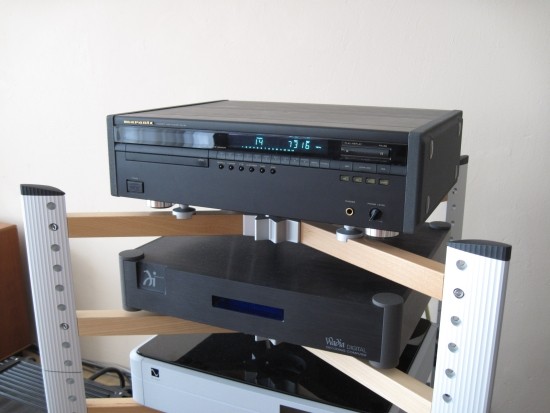
Good company: Wadia 27ix, PS Audio PWD MKII & Mark Levinson no390S and no 360S. The DAX was compared to all these DACs.
Comparisons with Computer SourceGood company: Wadia 27ix, PS Audio PWD MKII & Mark Levinson no390S and no 360S. The DAX was compared to all these DACs.
DAX with Windows PC/Winamp 5/HiFace EVO USB interface
For this comparison, I started off with the Cardas interlink but still I found the sound to be a little tired. Not tiring, but sounding somehow unmotivated. Just like with the CD source, the midrange was recessed and dynamics and speed could be better. At the same time the DAX gives the impression of having huge transparency and that’s something of a paradox. At first impression it sounds utterly open and transparent and doesn’t seem to be missing any details but at second listen you hear that fine details and leading edges are indeed being softened. Even though the DAX sounds very airy and fresh, still there is something of a covered quality to it, as if the speakers have been covered by blankets for the bass and midrange, but not for the treble. All in all, with either a CD player or Computer source, I feel that that the DAX resembles my old favourite Marantz CD94MKII using its analog outputs (see above), and I’m afraid that’s both a blessing and a curse.
Computer-Based Solution with PS Audio PWD coaxial input
Keeping the computer source the same way that it is used with the DAX, but changing to the PWD’s coaxial digital input, an entirely different sound is revealed. The first word in my mind was “Damn”. As in damn, that’s a different story. Here was a much more “present” sound: better transparency, better focus, better articulation, better dynamics, more speed and drive… There was definitely less fluidity and silkiness than with the DAX, but the other aspects were just so much more compelling that they overwhelmed the one lesser aspect and the PWD’s treble wasn’t too dry either.
NAS and PS Audio PWD’s Bridge and Ethernet input
This last comparison doesn’t really seem to have a place in the context of the DAX review but the owner had specifically asked me to compare it to the PWD and in the context of computer audio it makes sense to go all the way, and for the PWD, all the way means trying all its inputs. Using the same source material copied onto a Synology NAS running proprietary server software, the story was again very different. Compared to the same PWD’s coaxial input, the network input in combination with the bridge (firmware version 0.2.12) produced more air, more spaciousness and a more relaxed soundstage that was actually more like the DAX’s stage, with respect to the width but now with excellent focus and razor-sharp leading edges but no sharpness at all. Treble response is smoother and more refined than with the coax input and the overall feel is of a more “analog” sound, not in the sense of smoothness or gentle compression but in the sense of having the feeling of listening to the real thing, much like an LP on a good record player, minus the extreme air and infinite treble refinement and decay. Inspite of the DAX’s gorgeous and generous luxurious feel, my gut feeling was telling me that the PWD was much better than the DAX. I think you can sum it up by saying that its timing is just better.
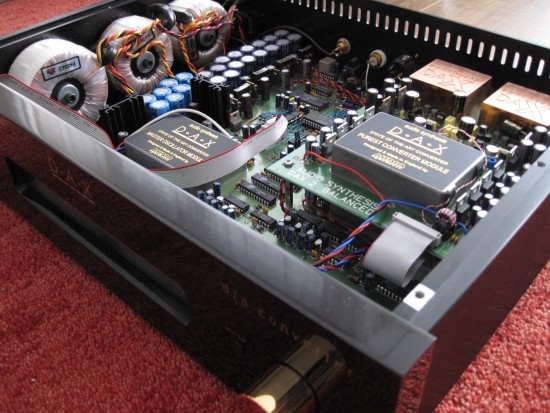
Conclusion
The DAX is an amazingly luxurious sounding component. It makes every CD sound smooth, full and relaxing. To top it off, it offers extremely refined treble with lots of air. But despite this description usually being my recipe for success, the DAX falls behind somewhat on other aspects that are also important for the overall music experience. Its midrange is a little recessed, percussive instruments (piano too) lack attack (transients are softened) and bass, although being full and full-colour, lacks drive, articulation and dynamic expression. Very, very seductive then, but a little too much of a good thing perhaps.

